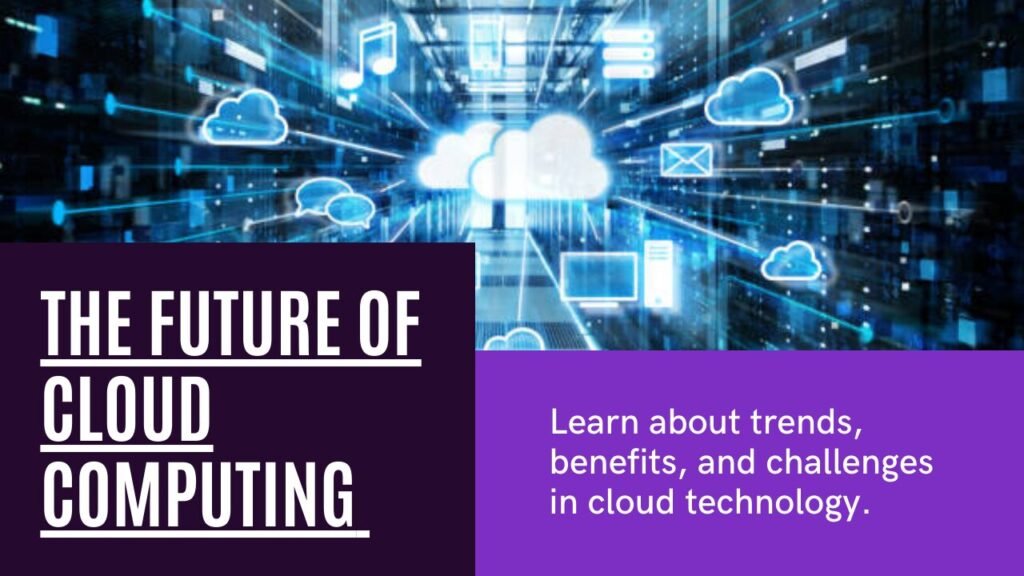Cloud computing has revolutionized the way businesses operate, offering unprecedented flexibility, scalability, and cost-efficiency. As we look ahead, the future of cloud computing promises even more transformative changes. Here’s what you need to know about the upcoming trends and innovations in cloud computing.
1. The Rise of Multi-Cloud Strategies
One of the significant trends shaping the future of cloud computing is the adoption of multi-cloud strategies. Businesses are increasingly leveraging multiple cloud service providers to avoid vendor lock-in, enhance redundancy, and optimize performance. This approach allows companies to choose the best services from different providers, whether it’s for cost-efficiency, specific functionalities, or geographic availability.
What to Watch:
- Enhanced multi-cloud management tools that simplify the orchestration and monitoring of resources across various platforms.
- Improved interoperability standards enabling seamless integration and data exchange between different cloud environments.
2. Edge Computing Expansion
Edge computing is set to complement cloud computing by bringing computation and data storage closer to the sources of data. This reduces latency, enhances performance, and allows for real-time data processing, which is crucial for applications like IoT, autonomous vehicles, and smart cities.
What to Watch:
- Growth in edge data centers and localized processing capabilities.
- Development of new edge computing frameworks and protocols to support real-time analytics and decision-making.
3. Artificial Intelligence and Machine Learning Integration
AI and machine learning are becoming integral to cloud platforms, offering businesses powerful tools to analyze data, predict trends, and automate processes. Cloud providers are increasingly embedding AI capabilities into their services, making advanced analytics accessible to companies of all sizes.
What to Watch:
- Expansion of AI-as-a-Service (AIaaS) offerings, providing pre-built AI models and development frameworks.
- Enhanced AI-driven cloud management tools for automated scaling, resource optimization, and anomaly detection.
4. Serverless Computing Growth
Serverless computing, or Function-as-a-Service (FaaS), is gaining traction as it allows developers to focus on writing code without worrying about underlying infrastructure. This model offers cost savings, automatic scaling, and simplified operations, making it an attractive option for many businesses.
What to Watch:
- Increased adoption of serverless architectures for a broader range of applications.
- Development of more sophisticated tooling and debugging options for serverless environments.
5. Improved Security and Compliance
As cloud adoption grows, so does the need for robust security measures. The future of cloud computing will see enhanced security frameworks, automated compliance checks, and more advanced threat detection systems to safeguard data and applications.
What to Watch:
- Advancements in cloud security technologies, such as zero-trust architectures and homomorphic encryption.
- Better compliance management tools that automate regulatory adherence and reporting.
6. Sustainable Cloud Computing
With increasing awareness of environmental impacts, there’s a growing emphasis on sustainable cloud computing. Cloud providers are investing in renewable energy sources, improving data center efficiency, and developing eco-friendly technologies to reduce their carbon footprint.
What to Watch:
- More cloud providers achieving carbon neutrality and investing in green technologies.
- Development of tools to help businesses monitor and reduce their cloud-related carbon emissions.
7. Quantum Computing Integration
Quantum computing holds the promise of solving complex problems beyond the capabilities of classical computers. Although still in its early stages, integration with cloud platforms is on the horizon, providing businesses with access to quantum resources for specific applications like cryptography, optimization, and drug discovery.
What to Watch:
- Emergence of Quantum-as-a-Service (QaaS) offerings from leading cloud providers.
- Development of hybrid solutions combining classical and quantum computing resources.
8. Personalization and Enhanced User Experience
Future cloud services will focus heavily on personalization, offering tailored solutions based on user behavior, preferences, and needs. Enhanced user experience will be achieved through intuitive interfaces, smart recommendations, and proactive support.
What to Watch:
- AI-driven personalization engines that adjust cloud services dynamically.
- Enhanced user interfaces and experiences across cloud platforms, making them more accessible and user-friendly.
Conclusion
The future of cloud computing is bright, with advancements poised to drive significant business transformation. By staying informed about these emerging trends and technologies, businesses can strategically position themselves to leverage the full potential of the cloud, driving innovation, efficiency, and competitive advantage. Embracing these changes will not only future-proof your organization but also enable you to harness the power of the cloud to achieve new heights.


